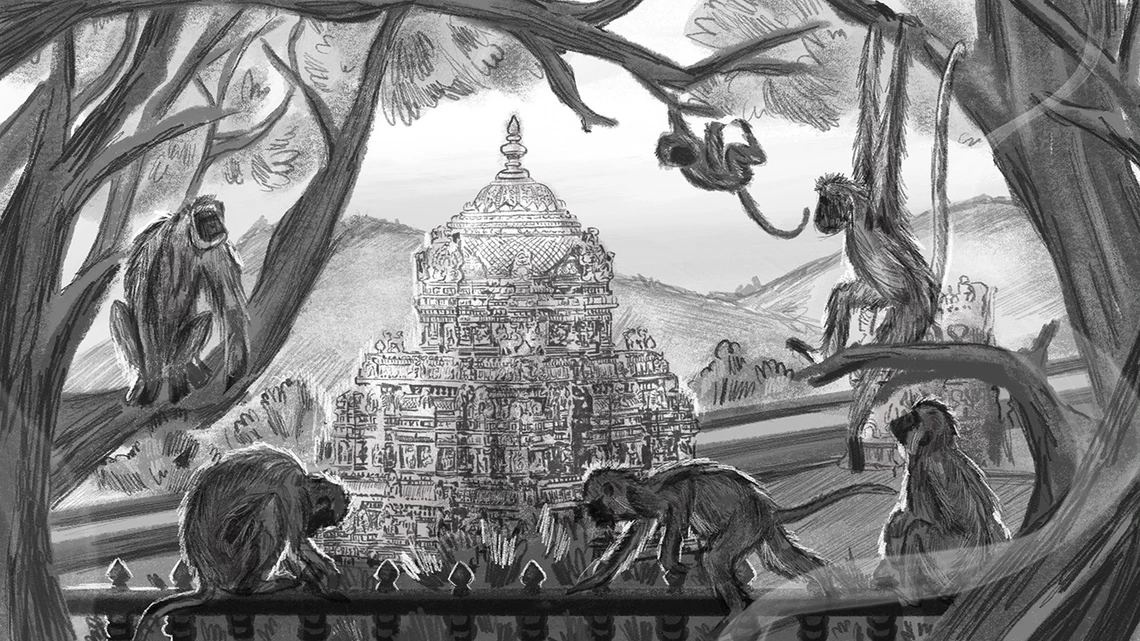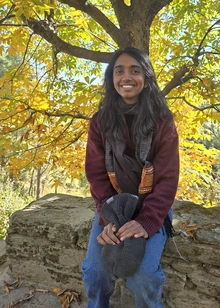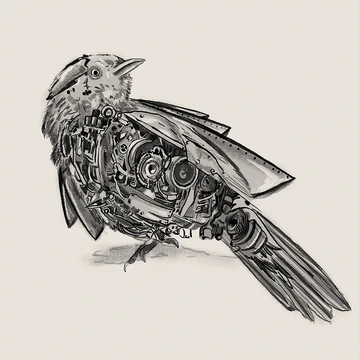From engineering to illustration: Pooja Venkatachalam Kumar is drawn to visual thinking

Venkatachalam Kumar's "Cultural Packaging for Tirumala's Temple and Wildlife" depicts Tirumala, which is located in Western Ghats of India and boasts one of the richest temples in the world.
From the ancient temples of Tirupati to the vibrant classrooms of the University of Arizona, Pooja Venkatachalam Kumar's journey is a testament to the transformative power of art.
Born and raised in the culturally rich town of Tirupati, India, Pooja's early exposure to art and architecture shaped her creative sensibilities. However, her path to becoming an artist was anything but conventional. She earned a bachelor's degree in chemical engineering, before making the leap to the world of the arts, earning her MFA in illustration at the Maryland Institute College of Art.
Today, Pooja is an assistant professor of practice in the Illustration, Design & Animation program at the University of Arizona School of Art. Her work blends traditional art forms with modern design principles, exploring themes of decolonization, environmental justice and cultural preservation. Through her teaching and creative projects, Pooja inspires her students to think critically about the role of art in society and to use their craft to address pressing global issues.

Pooja Venkatachalam Kumar
From engineering to art: A journey of discovery
"I've always been fascinated by colors, textures and patterns," Pooja said. "Even as a child, I remember constantly rearranging spaces, sketching designs and observing how different elements could come together to create something beautiful."
Despite her innate passion, pursuing design professionally wasn't always an obvious choice. Societal expectations initially led her to chemical engineering.
"Coming from a background where stable, conventional careers were encouraged, choosing a creative path required a lot of conviction; not just from me, but also in convincing those around me," she recalled.
However, her passion for creativity never waned. During her engineering studies, Pooja found herself drawn to visual thinking, often translating complex scientific concepts into visual forms.
During the COVID-19 pandemic, she began building her creative portfolio, collaborating with local nongovernmental organizations on environmental campaigns and exploring how art could be used to address societal issues.
"Once I immersed myself in it, there was no doubt in my mind. I knew this was where I was meant to be," she said.
Studying design refined her technical skills and helped her develop a deeper understanding of how design impacts daily life.
"It's not just about creating something that looks good; it's about solving problems, improving user experience and making spaces or products more intuitive and accessible," she said.
Teaching with empathy and intentionality
As an educator, Pooja is passionate about fostering empathy and intentionality in her students. She encourages them to think critically about the impact of their work and to use their art as a means of addressing societal issues.

Pooja Venkatachalam Kumar's "Reconstruction of nature without reference" is a work in progress.
"Empathy is crucial for designers," Pooja explained. "You need to put yourself in the shoes of your audience and create work that resonates with them."
Pooja's teaching philosophy is deeply influenced by her own journey. She emphasizes the importance of questioning established norms and exploring one's unique artistic voice.
"It's easy to get swept away by external standards," she said. "But as artists, we need to stay true to ourselves and our values."
Why U of A?
Pooja's decision to join the University of Arizona was driven by the interdisciplinary nature of the Illustration, Design & Animation program and the opportunity to collaborate with faculty and students from diverse backgrounds.
"Arizona is a place where art, science and technology come together," she explained. "It's an environment that encourages innovation and exploration."
Her work reflects this interdisciplinary approach. Pooja is constantly seeking new ways to integrate art with other fields, such as bringing design thinking into environmental studies.
"We're working on a project that takes students to Biosphere 2," she shared. "The idea is to use design to interpret scientific data in a way that makes it more accessible and engaging."
She's also collaborating with engineers and researchers on interactive installations that bring complex scientific concepts to life.
"One of the projects I'm really passionate about is using augmented reality to visualize climate-change data," she said. "It's about making information not just informative, but also immersive."
The future of design
Pooja's long-term aspirations reflect her multifaceted identity as an artist, educator and advocate. She hopes to continue creating work that challenges established norms and addresses complex societal issues.
"Art has the power to inspire change," Pooja said. "As artists, we have a responsibility to use our craft to make the world a better place."
Looking ahead, Pooja is excited about the possibilities that technology brings to design.
"The lines between digital and physical spaces are blurring," she said. "With AI, VR and AR, we have incredible tools to create more immersive, interactive experiences. But at the core of it all, design will always be about storytelling and connection."
Challenges and lessons learned
Like any creative professional, Pooja has faced her share of setbacks and doubts.
"Imposter syndrome is real," she confessed. "There were moments when I questioned whether I was good enough, whether I truly belonged in this space."
She offers three tips on what you can do if you feel this way.
- Look back on how far you have come.
- Embrace failure. It teaches resilience.
- Always continue learning.
"Design is an ever-evolving field," she said. "Staying updated, experimenting with new ideas, and pushing creative boundaries — that's what keeps the passion alive."
A version of this story was first published on the Arizona Arts website.

